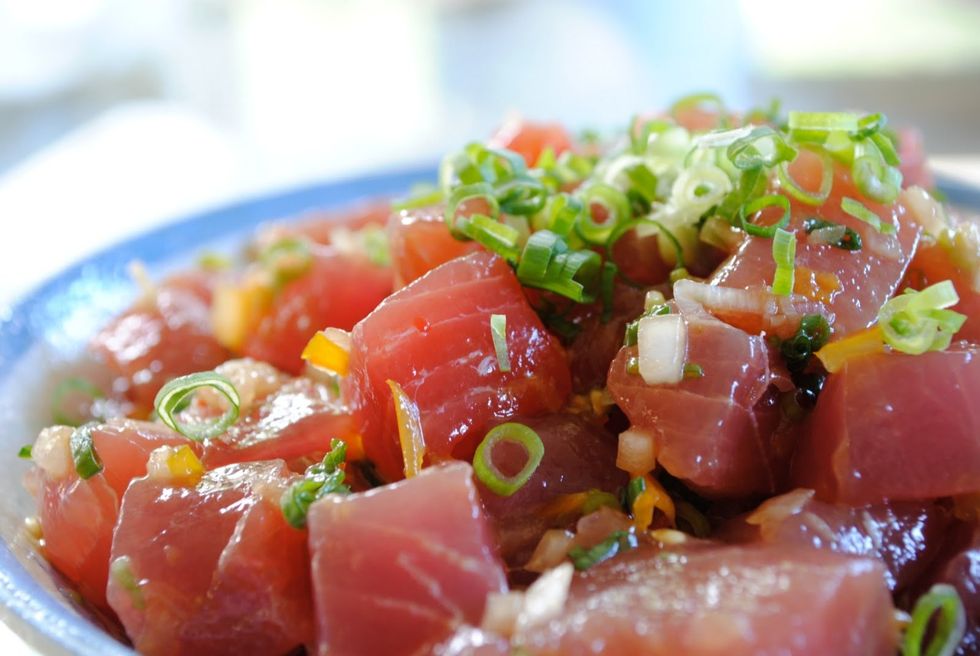I knew it was bad when I took a visiting friend to Foodland, bought them a bowl, and she told me, "I don't think this is how poke is supposed to taste."
Surely, you've heard of poke ("poh-kay") in Hawai‘i. The pronunciation is not to be confused with the poke in “what's a Facebook poke?” or "This cactus is so poky!" For those of you who have lived unfortunate enough lives to never come across this amazing snack, poke is traditionally cubed fresh, raw ahi (tuna) topped with shoyu (soy sauce), Maui onions, sea salt, and chopped green onions and served over hot rice. It's usually bought in a bowl or plastic pint container at a local supermarket or cafe.
And if you become tired of the classic style seasoning by some awful miracle, there's also octopus, Hawaiian style, salt and pepper...a delicious never-ending variety. Poke is a staple of lūʻaus, Superbowl parties, and family potlucks.
One (regretful) day, a local California restaurant owner tourist-ing in Hawai‘i decided to bring the poke bowl to LA. Not surprisingly, that shop got a ton of hype and gained sufficient publicity for its popularity. Back on O‘ahu, I was suddenly hearing that poke was trending in California, New York, and Boston.
Now, the spread of Hawaiian cuisine to the mainland doesn't seem like something that would cause any real hard feelings. However, when Hawai‘i locals see poke on the mainland, it no longer resembles the delicious comfort that we know it to be back at home – the dish has lost almost all of its cultural value. The fact that people are still using the Hawaiian word to define this dish that now contains little to no Hawaiian influences is disheartening.
In Hawai‘i, poke is a centuries-old traditional snack that originally consisted of scraps of reef fish eaten with crunchy seaweed and sea salt to complement its flavor and freshness. Mainlanders thankfully have still not gone so far as to change how they are cutting the fish, as poke literally means, "to cut crosswise into pieces" in the Hawaiian language. However, on the mainland we see high-quality fish losing the center of attention in a "poke bowl" and being overpowered by extravagant sauce flavors, soybeans, avocado, andother vegetables. Essentially, the "poke bowl" is being remolded into an exotic salad health bowl, and it's painful for any local to watch. It's also downright insulting when some shops on the mainland can't even retain the correct spelling of the word, such as "Wiki Poki" or "The Pokè Shack," yet the owners act like their food is authentically Hawaiian. Not only are these poke shops disappointing to us when we visit the mainland, they are truly unrepresentative of traditional Hawaiian poke and Hawai‘i food culture as a whole. What's up with that?




















